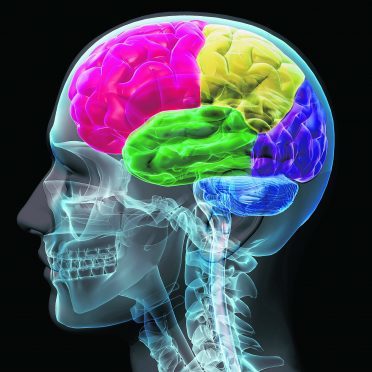So you eat well and exercise to keep your body in shape, but don’t forget that most vital of organs. Dr Jenny Brockis shares top tips from her book, Future Brain
1. Nutrition
Our brain is an energy hog that consumes 20% of all the energy we put into our body. There is no single best diet or food. It’s about including a wide variety of fresh, unprocessed foods, vegetables and fruits, lean protein (including three portions of oily fish a week), seeds, nuts and wholegrains. Water is essential. Even 1% dehydration is associated with fuzzy thinking, so keep fluid intake up with six to eight glasses a day.
2. Exercise
Exercise enhances blood flow to the brain, leading to reduced brain shrinkage and increased neurogenesis and plasticity, so your work performance stays top-notch. It provides improved cognition, learning and memory, improves mood and self-esteem and reduces stress and the risk of anxiety and depression, as well as heart and circulatory health. A 30-minute plus session of aerobic exercise five times a week is ideal.
3. Sleep
Sleep provides us with greater physical and mental wellbeing; it allows for neurone repair and maintenance and brings mood regulation. It allows us to forget the irrelevant, because we don’t need to remember everything forever. Sleeping is the time we break those synaptic connections no longer required. Generally, we need between seven and eight hours of uninterrupted sleep for maximum restorative and rejuvenating benefit.
4. Mental Stretch
Neuroplasticity is the brain’s ability to form new connections between existing neurons. The more curious we remain, the more we stimulate our brain plasticity. Start with one small change at a time. If you’ve always wanted to learn an instrument or paint, it’s time to sign up to a class. Make a daily habit: do a cryptic crossword, learn three new words and their meanings, read a book in a different genre. Ditch the props and leave behind that list of items.
5. Focus
We cannot multitask. Instead, do one thing at a time, give it your full and undivided attention and do it well. Regaining our attention and managing distractions is possible because we can exercise our attention just like a muscle. Pick a quiet place to allow your brain to think in a less stressed state, prioritise the following day’s work, fight to get three top priorities done every day and unplug regularly.
6. Mindset
The attitude we form in childhood will stick with us – and if it’s less than stellar, we have to make a conscious choice to change it. Attitude is always a choice. You can change it. Listen to your thoughts or voice when you respond to a challenge. You don’t have to buy into the negative. You can “flip” to look at things differently when you choose to.
7. Healthy Stress
It’s not the amount or severity of the stress that harms us – it’s our belief in whether or not we will sustain harm from the stress. It’s not the stress itself that is the issue, but how you view or share it with others. Putting our feelings into words (labelling) helps to dissipate some of the emotional intensity we experience. Re-framing can also help us move away from negative appraisal of a situation for which there is no basis other than our bad mood.
8. Mindfulness
Mindfulness takes us off autopilot. When we are being mindful, we are fully conscious of our environment and our thoughts. The essence of freeing your mind from busy-ness, and giving it room to think, is to make a start – and that involves choosing which form of meditation practice is best for you. Perhaps join a class to help you get into the habit of doing your practice – and practice as long as the time you have available.
9. Change Ability
Like evolution, change is a continuum. Our brains are designed to adapt constantly, not resist in stasis. Change signals growth, renewal and opportunity. What we have to do is ensure that we keep our threat response under control when it comes to the change management process and our brains.
10. Innovation
The brain has two possible pathways to solving problems: insight and logic. Mental flexibility is the ability to alternate rapidly between the two. If we adopt a childlike approach to our thought processes, our curiosity will increase, and therefore so will our creativity. It’s about allowing ourselves the freedom to explore the unknown and challenge accepted thinking and practice.
11. Collaboration
The outcome of many brains working together is greater than the sum of their parts. Connecting at a social level is highly motivating. Look people in the eye, get physical – when we greet others through some form of physical contact the brain is triggered to release oxytocin, the so-called “trust” hormone – and ensure everyone is encouraged to add their voice to the conversation.
12. Leadership
List the five leaders you most admire and then determine what leadership characteristics or values they hold in common.
There are typically five key strategies in bringing out the best in others: listen (give someone undivided attention), speak (choose words carefully), reflect (take time to pause), inquire (stay curious) and connect (follow-up with people to establish trust and empathy).
- This is an edited extract from Future Brain: The 12 Keys To Create Your High-Performance Brain by Dr Jenny Brockis, published by Wiley, priced £14.95.
